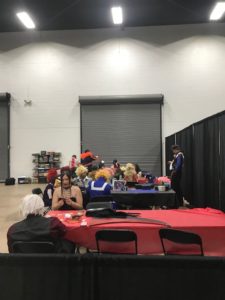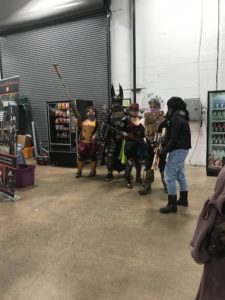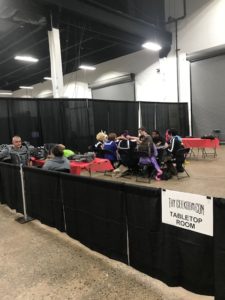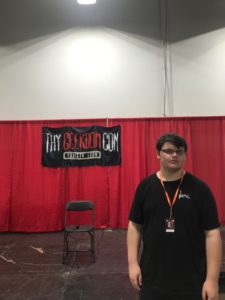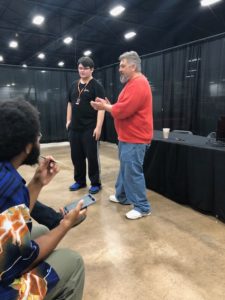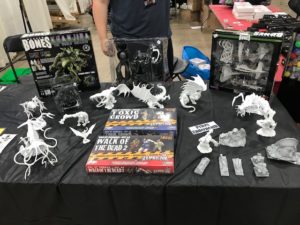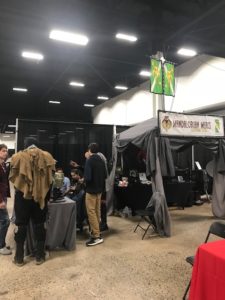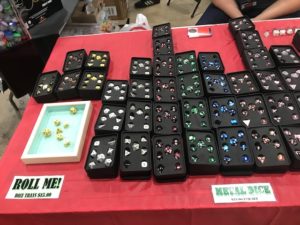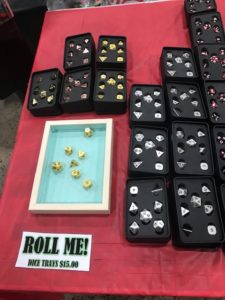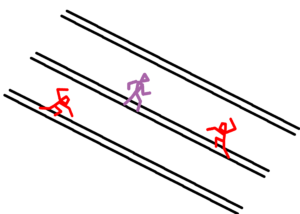Dash and Bash
A 2D Fast Paced Character Action Game
Maxwell Shaver
IMM 498 Senior Thesis: Research and Innovation
Professor Chris Ault
December 17, 2018
Abstract
The purpose of my project is to create a video game that is action packed and where the player moves along three horizontal parallel lines in order to limit movement for increased speed in game play. I will build the game in Unity and do the art myself. It will be an action game, which is fast-paced and progressive, to enable me to rush in and attack the challenge quickly. The game will be creative in the actions it presents and in the art, design and aesthetics to create engaging game play. The player will manipulate multiple planes while taking out masses of enemies. The multiple planes offers a grid like system where the player is thinking and playing within. The player will be thinking in a 3D environment with a typical faster pace of 2D game.
Table of Contents
Introduction
This year, as a senior, I developed a joy for working in Unity because it offers flexibility for game developers and creators, with real-time tools. Ever since I can remember I have liked to play video games and I also developed a creative side for drawing and art. When I entered college, and wanted to find a major, I envisioned developing skills and learning more in both of these areas, hoping to apply them to develop games someday. I would like to expand my art skills to help develop characters and design for video games. I have been doing pixel art for about three years. I grew up playing tons of 3D action games and loved them, such as Bayonetta, Devil May Cry, and Bloodborne. My idea is to create a fast paced and progressive video game that allows me to rush in and tackle the objective quickly. I enjoy this type of gaming and want to use my art skills in the game too.
For this thesis project, I considered what to do for about a year and went with video games because it is something I really enjoy doing and it will enable me to develop my skills in this area, which I hope to be able to work in after I graduate. In my sophomore year, I worked on a video game and always wanted to do that again. My goal is to create a game that replicates the thrill and deep mechanics of the games I grew up playing.
I always admired my friend Ryan Strenkowski’s knowledge on the technical side of video games. I wanted to develop that for myself. Ryan is also an IMM major, and he provided me feedback on my idea and design. My hopes for this project is to better understand the craft of making games combined with art and to develop my strategic and creative ideas into a real video game that I made.
The target audience for this game is broad, as it would apply to all people that enjoy into independent games that are fast paced and filled with action. If I am successful with a legitimate game in the end, I will put it on Steam. Steam is a platform for entertainment playing and connecting with others. Steam enables you to share your game with others and develop skills.
Historical Context
The first video game was created in October, 1958 by a physicist, William Higinbotham, which was similar to Pong, which was popular in the 1970’s, a quarter century before I was born. One of the largest game developing organizations today is Platinum Studios, which was founded in 2006 and has 209 employees. The head office is located in Osaka, Japan. Over the last few years, they have developed NieR:Automata, Teenage Mutant Ninja Turtles: Mutants in Manhattan, Bayonetta, and Star Fox Zero and Star Fox Guard. Platinum excels at their development of battle/combat games. They actually co-produced NieR:Automata because the other producer did not have the experience or the desire to create the required battle/combat system.
Platinum games method for development of a game is to first develop how the character is to play. The physical interactions the player can take in the game are referred to as “verbs”. It is important not to have too many verbs so the controls do not become cluttered. Verbs serve multiple functions such as flushing out the development/skills of a character. Verbs also lead to better game design. An example of a verb in Platinum Games that highlights the above was in one of their first projects, Bayonetta. In Bayonetta, they used a well-timed dodge to slow down time. This verb was used both in combat and in the puzzles between sections. This gave the character the assumed knowledge of how to combat but also gave the game player the ability to elude or fight without actually throwing a punch (Platinum Games).
I have also researched Hideaki Itsuno. He is the mind behind the later “Devil May Cry” series, which set the bar, which all other similar games are compared. Itsuno is a Japanese video game director and video game designer employed by Capcom for most of his career. He is credited as the director of Power Stone, Devil May Cry and Dragon’s Dogma series’. Although he did not direct/design the original Devil May Cry game, he did become involved with Devil May Cry 2 to steer the project back on course. He was then involved starting on Day 1 with Devil May Cry 3 and 4 (Hideaki Itsuno).
The more I considered what I wanted to achieve I realized my greatest inspiration is the game Dead Cells – simple 2D game with approximately 5 verbs relating to combat. Motion Twin developed this game, which is a French worker cooperative based in Bordeaux, France (Motion Twin). They have been making games since 2001 and are currently working on their first PC/Console title. Dead Cell has three consistent verbs of run, dodge and jump. Two of the actions the player can take, and the game is set up so you randomly get two weapons and two skills. Thus, all those randomized weapons can fit into the verb attack and all the skills can fit into the verb skill. Because of the player is always on the feet with hundreds of options to approach a situation. Because the players’ movement is consistent, it give the players the confidence to take risks and progress through the game. This is something I appreciate and am looking to incorporate into my own game (Dead Cells).
Current Context
When games switched to 3D, game developers had the ability to give the player the ability to interact with things on a larger scale, instead of just the screen. This opened up the ability to take on hordes of enemies at once, and lead to the creation of lots of fast pace action games.
In our current day, many smaller developers are moving back to 2D and taking things we learned in 3D into their 2D games. What I want to do is emulate the feeling in a fast paced 3D game in a 2D game because no one has done it before.
The benefits of the 2D are that the player can see everything going on rather than navigating a 3D space with a camera.
What my game is trying to attempt is to create a 3D game without the Y axis of the playing field so that it is easier to take in everything that is happening in the game. In 3D games, the Y axis is only used for jumping and dealing with enemies on a higher level.
In hindsight it those mechanics exists because they can’t get rid of the Y axis so they need to put something there.
For me I am taking Montgomery Harris’ rule of six and distilling my verbs down to six actions. I have not finalized this list as I continue to compile the list of verbs before finalizing.
I attended the “Thy Geedom Con,” and watched a panel being led by Montgomery Harris titled “Creating Your Own Universe”. What I heard from Mr. Harris truly strengthened my understanding of how important a video games universe is in the success of your user’s gaming experience. Montgomery explained how his military training and the overabundance use of acronyms lead him to apply “Dog’s Bollocks” to all of his writing efforts in developing a believable and readable universe. He also shared the rules of six which also greatly influences how your users enter a game and how that will drive the user to continue with your game or to leave your game shortly after beginning. For Harris, “Dog’s Bollocks” means the following
- Do your Research
- Begin
- Organize
- Locations
- Outline
- Kill your darlings
- Start writing
For the rule of six, when you begin you need to develop what is/was happening in your universe
- 6 years ago
- 6 months ago
- 6 weeks ago
- 6 days ago
- 6 hours ago
- 6 minutes ago
- 6 seconds ago
Then apply six to everything. Have six locations, six core characters, six event, and your characters should have six main traits, etc. This will provide you with a sound foundation for your universe so you can begin writing your story or the game you are creating. I thought when applying that to video games and realized video games are universes you are literally interacting with. What Montgomery was doing was creating a world the user would believe and imagine. I applied the rule of 6 and thought about what user would do in first 6 seconds then the next 6 minutes and what they would do in the remainder of the game. In considering all of this I have identified multiple examples which support my thoughts and will continue to explore this as I complete my thesis project of the gaming world I want my players to interact in.
Technical Strategy
To access the game, you would use a laptop, and inevitably I would like to add controller support because it is more comfortable to play on. As discussed, my desire is to build my game utilizing Unity. Therefore, my research has been focused on the coding in Unity. This is progressing however I have yet to get the enemies working but the player can attack and run around from left to right (Unity 2018).
To build upon this I have also visited Lynda.com which provides video trainings to continue learning and understanding the basics of Unity. I am using this to better translate the movement I want to achieve with my characters. Although I was able to increase the speed of the characters, it was negatively affecting other facets of my game design so I am further researching how to address these issues. One great resource I have found is the YouTube channel “Extra Credits”. I have viewed their whole series on making your first game and I continue to research this information. Extra Credits states your first game should be small in scope and when putting your game plan together, break it into smaller achievable chunks. They recommend having small weekly objectives to maintain a steady progressive pace to achieve them.
In devising the game, I am going to be using Unity. There will be no physics to the game. Instead everything will go by the translate method in Unity to move around. Translate is to move in a digital space from your current position to a specified position without the use of physics (Burnett and Evands 2018). The game will have lots of effects on actions to communicate what is happening to the player. For example, when something is hit, it will translate a few pixels back. This simulates physical force pushing the object away. In order to emulate 3 dimensionality in a 2D space, the players will move along a grid with 3 planes on the Y position. This will give the appearance of characters moving on a flat plane.
Currently I am using the website Piskelapp.com to create the pixel art, but I plan on moving into Photoshop next semester to have a larger variety of tools to work with.
Aesthetic Strategy
First and Foremost I am going to create the mechanics of the game before those elements are given art. This follows the age old tradition of form, follows function in video games. After that I will craft a high fantasy setting so that whatever mechanics I develop, will make sense because anything would be possible in a magical setting.
My aesthetic design has changed from when I showcased at AIMM After Dark, because I was inspired by some of the feedback I received from others who were playing my game. They said it would be ridiculous for one guy on the screen to be fighting tons of other guys throughout the level. Therefore my new strategy for aesthetics is a fantasy knight fighting monsters. This would open up the opportunity to make enemies that are not humanoid and it goes back to a style that I am more familiar with.
For my research I continue to review YouTube and Lynda.com. Both of these sites have provided me with great information. On Lynda.com I am able to focus and research on specific topics as it relates to Unity. I have found this to be very useful. Some of the topics I’ve been researching include loops, general programming habits, and creating classes. Another aspect of Lynda.com which has assisted me in my research is their asset store which I’ve learned about Cinemachine.
Cinemachine is an application for 2D professional camera tools for Unity that provide access to camera control at AAA game level. By using Cinemachine it should assist with some issues I’ve been experiencing as well as save some time. I am just starting to explore this and to understand how it could enhance and improve my final project.
My exploration and research on YouTube continues and I have discovered a number of channels which are dedicated to Pixel art. One channel which I have found to provide some simple direction is Brackeys (Asbjorn 2018). Through Brackeys there are coding tutorials, tips and tricks.
I have also researched channels dedicated to the drawing of anatomy. A particularly good one is ProkoTV on YouTube. This is led by Stan Prokopenko who is an artist and teacher and has created a number of instructional art videos.
A lot of what I’ve learned is how the animation design is essential to convey the essence of your characters.
Similar to Brackeys I have also spent time researching on MortMort which is also on YouTube but is also available on mortmort.net. This person also provides numerous tips and special ways to code line which assists in breaking down the Pixel art for line development. MortMort further shares how he goes about his game development using Asperite for Pixel Art, Photoshop for digital painting, Stencyl for simple 2D games and Unity for more complicated games. I found all of this interesting and additional topics for further research.
As I continued to research further into Pixel art I found a YouTube channel called “The Verge” which has a great documentary web series on Japanese designers. This is a Toco Toco TV and is an ongoing web series. The episodes are in Japanese but you can turn on subtitles. Each of the episodes are interesting and I find some more useful than others but in general a good resource for which is needed in game design. A few of the interviews I’ve watched include Yoko Taro, director of Nier: Automata which touches on his creative process as well as why his games feel a bit different than others or as I like to say “goofy”. Another is the director of Persona 5, Katsura Hashino which touches on creating a game in the city of Tokyo and being real-world focused. Toco Toco is now Archipel as they have evolved this channel but the interviews are still known as Toco Toco (Archipel 2014).
Implementation
Prototype Dec 1
- Have the layout of the game
- Create the skeleton of the design
December – First part of Winter Break
- Practice doing art
- Learn and practice coding in Unity
- Build the skeleton of the aesthetics of the game, scheme, motifs, main characters look
January
- Develop the players
- Develop the mechanics and verbs
- Understand how the people will interact with the game in order to build the rest of the game around that concept
February
- Build the enemies and obstacles the player will face
- Figure out the flow of the game
March
- Finish up the art in the game
- Debugging
- Add audio and music
April
- Fine tuning and tweaking all the details
- Specifying the brains of each animation
- Adjusting the damage numbers
- Adding tweaks and effects, quality of life stuff
Summary and Conclusion
My project objective is to create an action game where the player moves along three horizontal parallel lines to limit movement so that I can quicken the speed of combat game play.
I am inspired by this idea because I like action games, which are fast-paced and progressive. These games allow me to rush in and tackle the objective quickly. I would like to develop my own game and build upon this ability. I have always been very interested in video games, the design, the stories behind them and the people that build them. I would like to imbibe them with all of the learnings I have gathered from being an avid game player over the years and layer in my creative side to tell the stories I want told in this format. My future aspirations is to get into creative work and I am really enjoying Unity and want to continue to build and employ by skills here in video games. I think my project is a novel idea, which will lead to fun and engaging gameplay. Furthermore, this idea is unique because the player has to juggle multiple planes while taking out hordes of enemies. The multiple planes provides a grid like system which the player is thinking and playing within and I want to see if players can juggle thinking in a 3D environment with a typical faster pace of 2D game. I plan to technically implement my project with Unity. Also, I have been doing pixel art for several years and want to create as much of the art as possible.
References
“Archipel.” YouTube, YouTube, 2014, www.youtube.com/channel/UC3zoY9LapZERsN7caDKqz0w/about.
Asbjorn. “Brackeys Is Creating Videos on Game Development.” Patreon, 2018, www.patreon.com/brackeys.
Burnett, Bill, and Dave Evands. Designing Your Life: How to Build a Well-Lived, Joyful Life. Alfred A. Knopf, 2018.
“Dead Cells – The RogueVania from Motion Twin.” Dead Cells – Rogue-Lite Metroidvania with Some Souls-Lite Combat on Top! Kill, Die, Learn, Repeat., 2018, dead-cells.com/.
ExtraCreditz. “Extra Credits.” YouTube, YouTube, 2014, www.youtube.com/user/ExtraCreditz.
Harris, Montgomery. “Montgomery Harris.” Mysite, 2018, www.montgomeryharris.com/bio.
“Hideaki Itsuno.” IMDb, IMDb.com, 2018, www.imdb.com/name/nm1393914/.
“Motion Twin – Free Indie Games. Play on Your Browser, Mobile or Tablet!” Motion Twin – Free Indie Games. Play on Your Browser, Mobile or Tablet!, 2018, motion-twin.com/.
“October 1958: Physicist Invents First Video Game.” Edited by Alan Chodos, American Physical Society, 2018, www.aps.org/publications/apsnews/200810/physicshistory.cfm.
“PlatinumGames Inc. Official WebSite.” PlatinumGames Official Blog, 2018, www.platinumgames.com/.
“Thy Geekdom Con.” Thy Geekdom Con, 2018, www.thygeekdomcon.com/.
“Unity Training and Tutorials.” Lynda.com, Lynda.com, 2018, www.lynda.com/Unity-training-tutorials/1242-0.html.
“Unity.” Unity, 2018, unity3d.com/.
“Welcome to Steam.” Steam, The Ultimate Online Game Platform, 2018, store.steampowered.com/about/.
